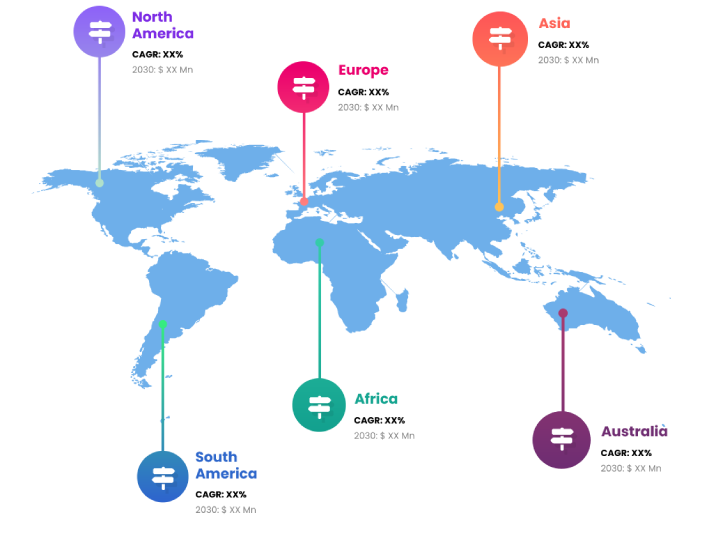
When natural tears aren't producing enough moisture to alleviate dry eye (also known as keratoconjunctivitis sicca), a lubricant eye drop may be used to alleviate discomfort and dryness. During eye exams and checks, these artificial tears are also used to hydrate contact lenses. For severe cases of moderate to severe dry eye, alternative treatments can lead to the use of artificial tears. The purpose of these artificial tears is to manage various eye conditions by simulating natural tears. When used as directed, these eye drops alleviate dryness and irritation.
To create these synthetic tears, a combination of water, salts, and polymers is mixed. These tears, however, do not originate from the proteins seen in actual tears. You can find these at any pharmacy or health facility. The necessity for tear gas varies from country to country according to factors such as population size, percentage of the elderly population, prevalence of disease, and percentage of the female population. There are three levels to the tear film that protects the eye's surface: the aqueous, lipid, and mucous layers.
In order to alleviate symptoms of dry eyes and irritation of the ocular surface, patients are frequently given artificial tears, which encompass a broad variety of lubricating eye solutions. A large percentage of the world's population deals with dry eye syndrome and other ocular issues like allergies to their eyes, making artificial tears an essential ophthalmic treatment. Since most of it is available without a prescription, patients can save money by taking it themselves, which eases the financial strain on healthcare systems. The launch of more advanced versions of eye drops has been facilitated by the growing involvement of several firms in research and development projects for these products, which is expected to contribute to the growth of the global market during the forecast period.
Positive and negative effects on specific pharmaceutical markets are anticipated to be substantial as a result of the COVID-19 pandemic. Governments around the world have instituted stringent lockdowns to contain the virus, but this has had serious consequences for the healthcare sector. Healthcare systems have delayed or cancelled certain non-essential medical operations and consultations, which has had a negative impact. However, the effect has been beneficial for some OTC products as, in most instances, customers are able to buy these products from internet pharmacies without any restrictions. The world market is currently anticipating a favorable effect from the 2019–2020 coronavirus pandemic.
Eye drops formulated to mimic tears are available to those who suffer from dry eye, which can irritate the surface of the eye. Dry Eye Syndrome, also known as keratoconjunctivitis sicca, is a common ailment that affects the surface of the eye and causes inflammation and disruption of the tear film. Artificial tears are most often used to treat this condition. For cases involving eye procedures, they are also utilized to keep the outer surface of the eye consistently wet. A few varieties of artificial tears help keep tears from drying out, soothe dry eyes, and speed up the healing process. Additionally, it is common practice to use artificial tears to hydrate contact lenses during eye exams and checkups.
There are three layers to the tear film that covers the surface of the eye: aqueous, lipid, and mucous. Fatty substances that decrease tear evaporation are found in the lipid layer, while enzymes, electrolytes, antimicrobial proteins, antibodies, and other components make up the aqueous layer. The gelatinous glycoproteins and mucins that make up the mucous layer aid in spreading the tear film uniformly throughout the cornea. In addition to being readily available to customers over the counter, artificial tears are frequently used in conjunction with other therapies for dry eye. Both preservative-containing and preservative-free eye drops are the most popular types of artificial tears. The former is more commonly found in multi-dose bottles and has many preservatives to stop bacteria from growing after the bottle is opened, while the latter is better suited for moderate to severe dry eyes and has fewer ingredients. Because preservative-containing eye drops can occasionally irritate the eyes, preservative-free eye drops are typically preferred. You may trust Genteal, Soothe, Blink Tears, Systane, TheraTears, Oasis, and Retaine, among other brands, when it comes to artificial tears.
Rising consumer knowledge of ocular disorders such dry eye syndrome and how they impact patients' quality of life is a major trend in the worldwide market for artificial tears. Key government agencies and the major players in the production industry have both contributed to raising public awareness of dry eye syndrome. In the United States, for example, the National Institutes of Health (NIH) backs the "National Dry Eye Awareness Month" celebration that takes place in July. As a result, campaigns like this aid in getting the word out about dry eye syndrome and the steps that can be taken to effectively treat it. Sales in the market are anticipated to have a notable uptick throughout the forecast period due to these developments.
Report Coverage
Global Artificial Tears research report categorizes the market for global based on various segments and regions, forecasts revenue growth, and analyzes trends in each submarket. Global Artificial Tears report analyses the key growth drivers, opportunities, and challenges influencing the global market. Recent market developments and Artificial Tears competitive strategies such as expansion, product launch and development, partnership, merger, and acquisition have been included to draw the competitive landscape in the market. The report strategically identifies and profiles the key Artificial Tears market players and analyses their core competencies in each global market sub-segments.
| REPORT ATTRIBUTES | DETAILS |
|---|---|
| Study Period | 2017-2031 |
| Base Year | 2023 |
| Forecast Period | 2023-2031 |
| Historical Period | 2017-2021 |
| Unit | Value (USD Billion) |
| Key Companies Profiled | Johnson and Johnson Vision Care (US), Allergan plc (Ireland), Alcon Plc (Switzerland), Bausch & Lomb Incorporated (Canada), Santen, Inc (Japan), URSAPHARM Arzneimittel GmbH (Germany), ROHTO Pharmaceutical CO., LTD (Japan), Similasan Corporation (US), Ocusoft (US), and Nicox (France) |
| Segments Covered | • By Product |
| Customization Scope | Free report customization (equivalent to up to 3 analyst working days) with purchase. Addition or alteration to country, regional & segment scope |
Key Points Covered in the Report
- Market Revenue of Artificial Tears Market from 2021 to 2031.
- Market Forecast for Artificial Tears Market from 2021 to 2031.
- Regional Market Share and Revenue from 2021 to 2031.
- Country Market share within region from 2021 to 2031.
- Key Type and Application Revenue and forecast.
- Company Market Share Analysis, Artificial Tears competitive scenario, ranking, and detailed company
profiles. - Market driver, restraints, and detailed COVID-19 impact on Artificial Tears
Market
Competitive Environment:
The research provides an accurate study of the major organisations and companies operating in the global Artificial Tears market, along with a comparative evaluation based on their product portfolios, corporate summaries, geographic reach, business plans, Artificial Tears market shares in specific segments, and SWOT analyses. A detailed analysis of the firms' recent news and developments, such as product development, inventions, joint ventures, partnerships, mergers and acquisitions, strategic alliances, and other activities, is also included in the study. This makes it possible to assess the level of market competition as a whole.
List of Major Market Participants
Johnson and Johnson Vision Care (US), Allergan plc (Ireland), Alcon Plc (Switzerland), Bausch & Lomb Incorporated (Canada), Santen, Inc (Japan), URSAPHARM Arzneimittel GmbH (Germany), ROHTO Pharmaceutical CO., LTD (Japan), Similasan Corporation (US), Ocusoft (US), and Nicox (France)
Primary Target Market
- Market Players of Artificial Tears
- Investors
- End-users
- Government Authorities
- Consulting And Research Firm
- Venture capitalists
- Third-party knowledge providers
- Value-Added Resellers (VARs)
Market Segment:
This study forecasts global, regional, and country revenue from 2019 to 2031. INFINITIVE DATA EXPERT has segmented the global Artificial Tears market based on the below-mentioned segments:
Global Artificial Tears Market, By Type
Polyethylene Glycol
Propylene Glycol
Cellulose
Glycerin
Others
Global Artificial Tears market, By Application
Dry Eye Syndrome
Allergies And Infections
Others
Global Artificial Tears Market, By Distribution Channel
Hospital Pharmacies
Drug Stores
Retail Pharmacies
Online Pharmacies
Global Artificial Tears market, Regional Analysis
- Europe: Germany, Uk, France, Italy, Spain, Russia, Rest of Europe
- The Asia Pacific: China,Japan,India,South Korea,Australia,Rest of Asia Pacific
- South America: Brazil, Argentina, Rest of South America
- Middle East & Africa: UAE, Saudi Arabia, Qatar, South Africa, Rest of Middle East & Africa
You will get in-depth and extensive artificial tears market market research and competitor analysis for your business to help you develop more profound insights into the artificial tears market Market.
Through INFINITIVE Data Expert is a professional Market Research services, I will identify the artificial tears market market size, demand & opportunities, growth rate, and target audience with a comprehensive analysis of your competitors.



